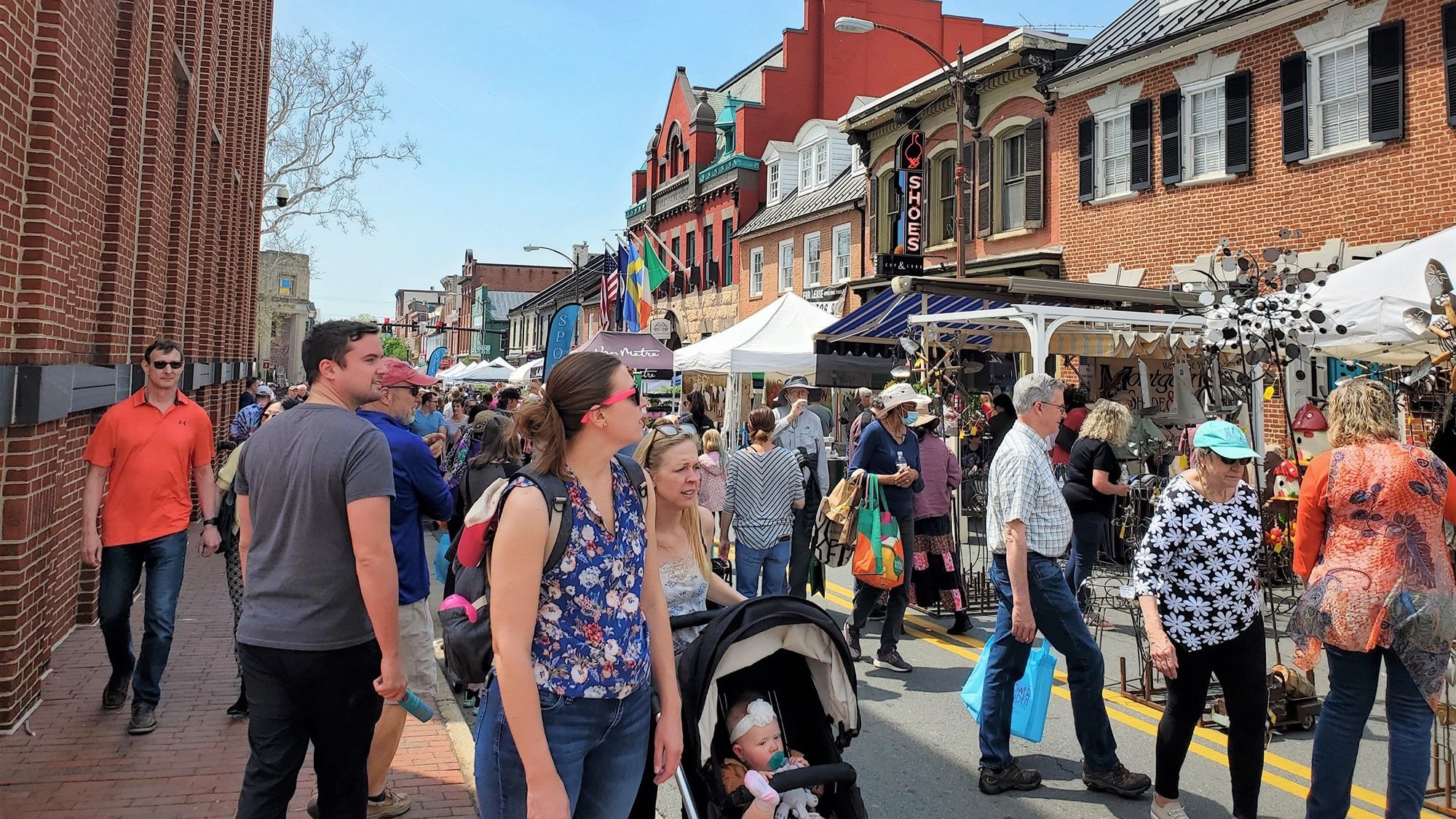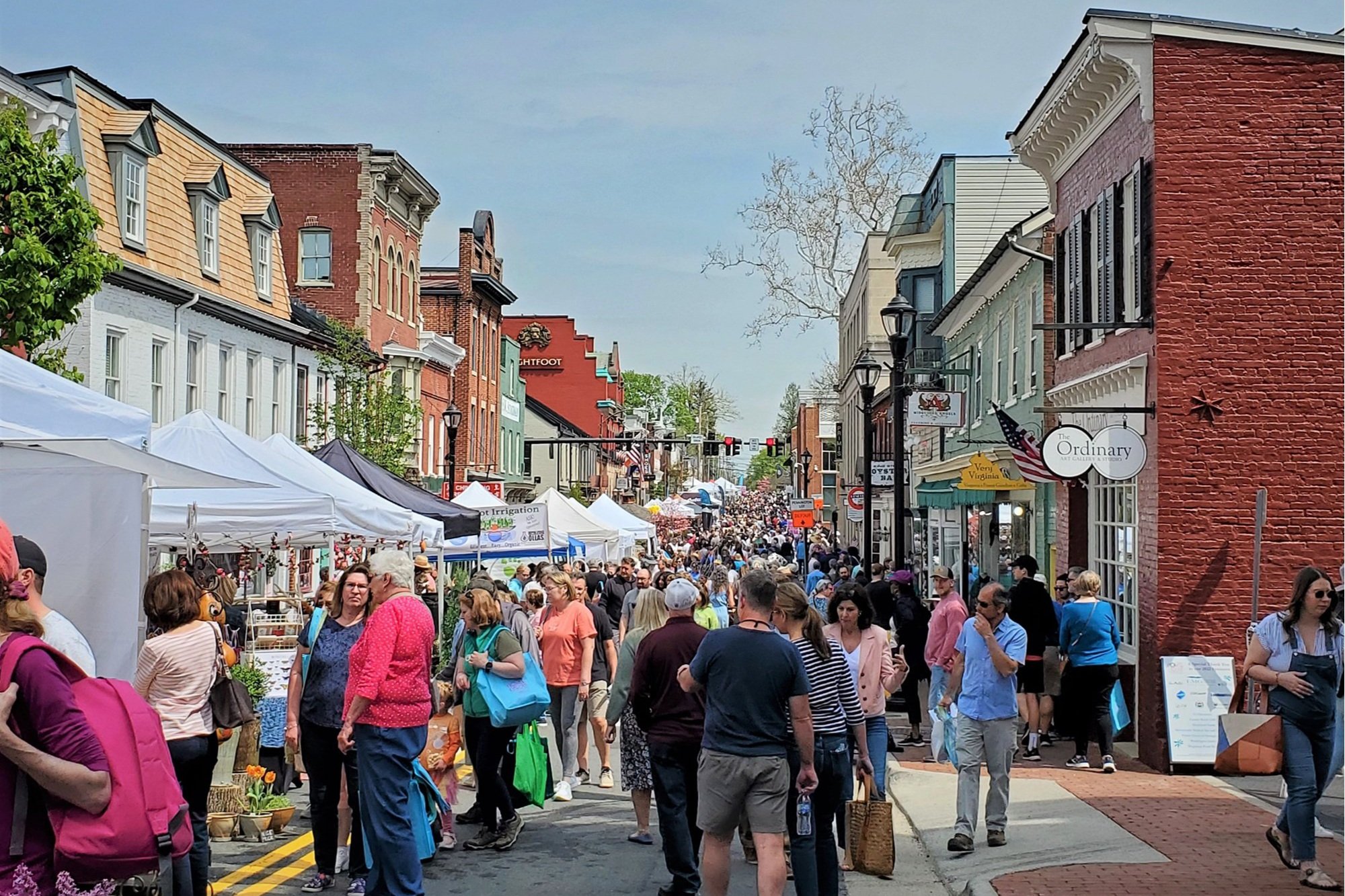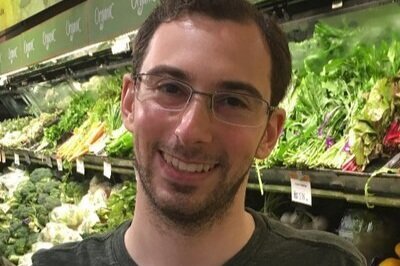"Streets Closed to Vehicular Traffic"
This article was originally published on Addison Del Mastro’s Substack The Deleted Scenes, and is shared here with permission. All images for this piece were provided by the author.
How do you get suburbanites and small-town Americans to embrace car-free streets? Have a festival!
Back in April, my wife and I went to the Flower & Garden Festival in downtown Leesburg, Virginia. For those of you not familiar with the area, Leesburg is the county seat of Loudoun County, immediately west of Fairfax County, and it’s one of a few classic small towns out that way (another one to check out is Middleburg). Most of Leesburg’s recent population growth is standard sprawl past the town itself, but the old town is lively and successful, too. The whole county is growing, and seeing, unfortunately, the same suburbanization that Fairfax underwent in previous decades.
Several of the core downtown streets were closed to car traffic for the festival, leading to delays on the big, multi-lane stroad into town. Parking was also tricky; I almost had to drive up five stories in the first parking garage, only to drive back down and try another garage. Luckily we snagged a spot at the top floor!
And you know what? I wasn’t frustrated and annoyed that I couldn’t just breeze into town and find an easy parking spot. I was just excited to ditch the car and get to the streets. That’s a distinction with a difference. When easy parking is your major selling point, maybe you don’t really have all that much to sell.
We didn’t buy any plants or flowers or garden stuff—we were going to a winery later, and plants would wither in the car, plus, importantly, we don’t have a garden. But we did buy some salsa and pizza sauce from a local company owned by a veteran, and some herb-infused vinegar from a specialty oil and vinegar shop. We enjoyed just being around people, in a walkable, small-town setting. The festival vendors were just tents set up as informal shops. The stores in town were also open and were getting a lot of extra foot traffic and, presumably, business. Take a look:
Here’s the town square:
And a couple of streets just off the main drag:
You’ll notice there are people of all ages. There are families with young children, young couples, older couples, groups of friends. This is not abnormal. It’s what city streets want to be, and were designed to be. Yes, vehicles have always moved through them. But look at old photos of American downtowns and you’ll see, in addition to the vehicles, so many people.
My photos above look a lot like the photos of car-free European city centers that often go viral on social media. Americans look at those pictures like they’re novelties. We vacation in places like that and talk about how nice they are. But why are we fine with occasionally turning our own cities and towns into something like that—and obviously really liking it!—and then going back to the same old, same old?
It’s not that towns can really be exactly like this all the time. It’s more that we have a hard time imagining any alternative to driving everywhere, spreading out homes, and treating classic urbanism as a sort of open-air museum to visit once in awhile.
I almost wonder if our attitudes about work and leisure don’t have something to do with this. It’s almost as if we don’t do this more often because we like it; perhaps we view it as a slightly sinful indulgence, after which we have to get back to real work.
Or maybe it’s just that the convenience of quick travel and easy parking is very hard to give up—even when giving it up can give us so much in return.
Addison Del Mastro writes on urbanism and cultural history. He tweets at @ad_mastro and writes daily at Substack.






